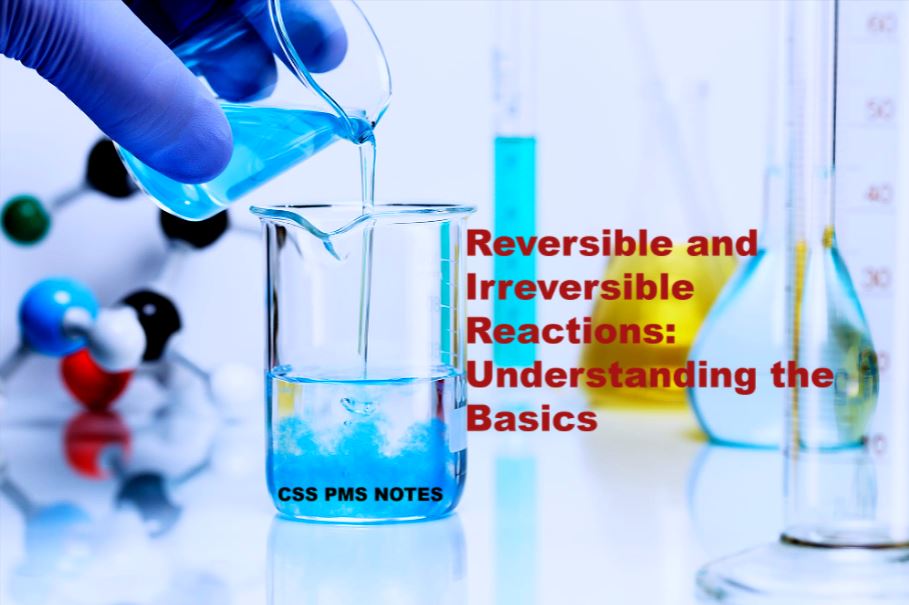Reversible and Irreversible Reactions: Understanding the Basics

Reversible Reaction :
A reversible reaction is a chemical reaction that can proceed in both forward and backward directions, resulting in the formation of an equilibrium mixture of reactants and products.
Example :
N2 (g) + 3H2 (g) ⇌ 2NH3 (g)
In this reaction, nitrogen gas (N2) reacts with hydrogen gas (H2) to form ammonia (NH3). However, the reaction can also proceed in the reverse direction, where ammonia decomposes back into nitrogen and hydrogen gases.
Forward Reaction :
N2 (g) + 3H2 (g) → 2NH3 (g)
Reverse Reaction :
2NH3 (g) → N2 (g) + 3H2 (g)
Equilibrium :
The forward and reverse reactions occur simultaneously, and the concentrations of the reactants and products reach a state of equilibrium.
Diagram:
N2 (g) + 3H2 (g) ⇌ 2NH3 (g)
Forward Reaction Reverse Reaction
N2 + 3H2 → 2NH3 2NH3 → N2 + 3H2
Equilibrium: Equilibrium:
N2 + 3H2 ⇌ 2NH3 2NH3 ⇌ N2 + 3H2
Irreversible Reaction :
An irreversible reaction is a chemical reaction that proceeds in only one direction, resulting in the complete conversion of reactants to products. In other words, the reaction cannot be reversed, and the products cannot be converted back into the reactants.
Example:
2Na(s) + 2H2O → 2NaOH
The reaction between sodium (Na) and water (H2O) to form sodium hydroxide (NaOH) is an example of an irreversible reaction.
Reaction Equation :
2Na(s) + 2H2O → 2NaOH
Description :
In this reaction, sodium (Na) reacts with water (H2O) to form sodium hydroxide (NaOH). The reaction is highly exothermic, releasing a large amount of heat energy. The reaction is also highly irreversible, meaning that the products (NaOH) cannot be converted back into the reactants (Na and H2O).
Why is this reaction irreversible?
There are several reasons why this reaction is irreversible:
1. Highly exothermic : The reaction releases a large amount of heat energy, making it highly exothermic. This means that the reaction is highly favorable, and the products are highly stable.
2. Formation of a strong base : Sodium hydroxide (NaOH) is a strong base, which means that it is highly reactive and cannot be easily converted back into its constituent elements.
3. No reverse reaction : There is no known reverse reaction that can convert sodium hydroxide (NaOH) back into sodium (Na) and water (H2O).
In summary, reversible reactions can proceed in both forward and backward directions, resulting in an equilibrium mixture of reactants and products. Irreversible reactions, on the other hand, proceed in only one direction, resulting in the complete conversion of reactants to products.